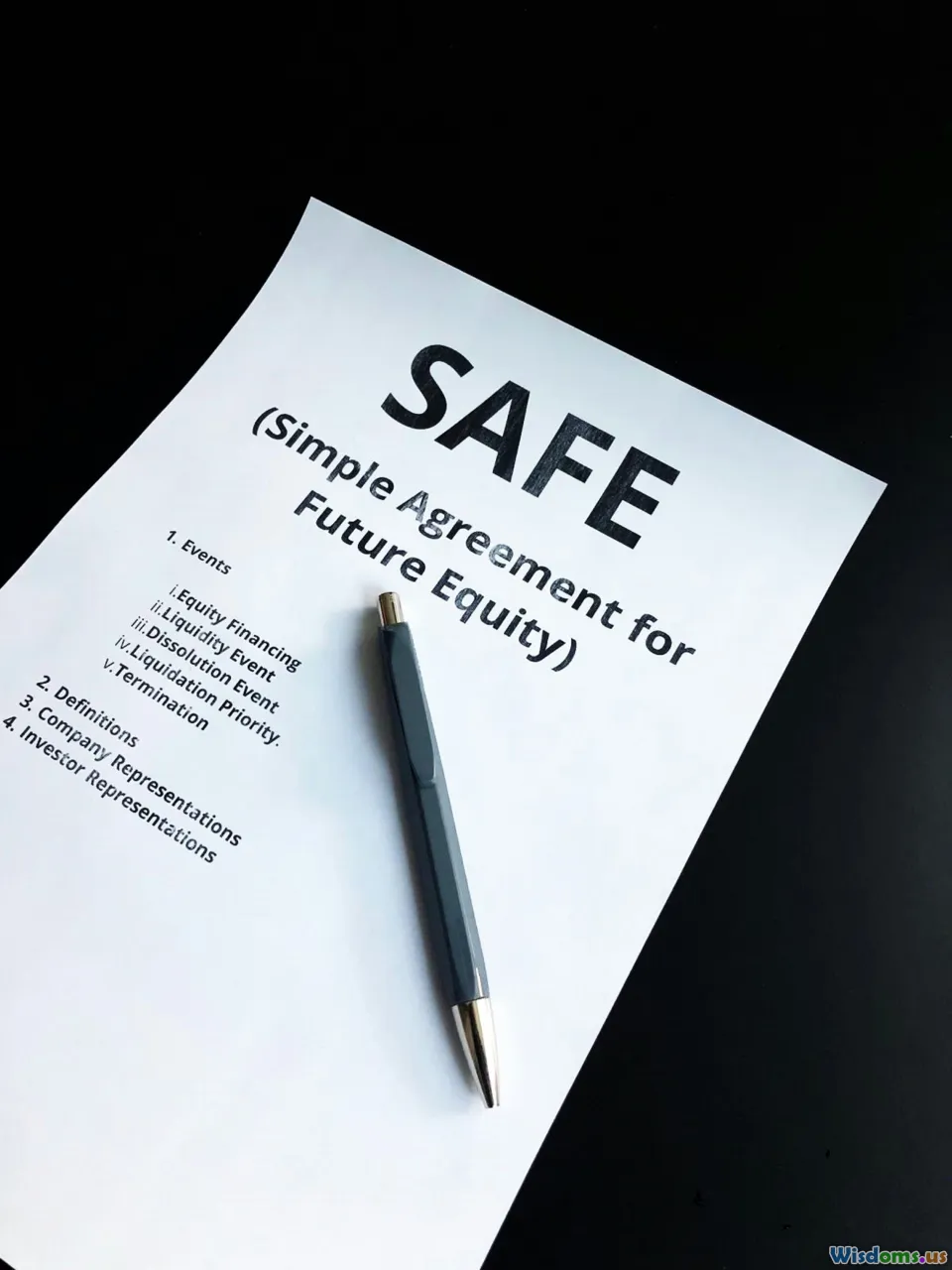
Comparing Insurance Products for Small Business Owners
19 min read A comprehensive guide to comparing insurance products for small business owners seeking the best coverage options. (0 Reviews)
Navigating the Insurance Maze: Comparing Products for Small Business Owners
Starting or running a small business involves ambition, grit, and no shortage of risk. Among the wisest steps an owner can take is investing in the right insurance products. But with a dizzying array of coverage options, how do you choose policies that protect your venture without draining your bottom line? This comprehensive guide will deconstruct the main types of insurance for small businesses, clarify what sets each apart, and provide actionable insights suited for every stage—whether you're in your first year of operations or scaling beyond your initial storefront.
Evaluating Small Business Risk Profiles

No two businesses are alike. A cozy coffee shop, a consulting firm, and a construction contractor may be equally passionate about their clients, yet face strikingly different risks on a daily basis. Before wading into insurance comparisons, it's crucial to assess your risk profile:
- Industry Hazards: Does your work involve physical goods, digital assets, client consultations, or heavy machinery?
- Location Factors: Are you operating from a brick-and-mortar location vulnerable to theft or disaster? Or do you primarily offer remote services?
- Workforce Size: Do you have employees? If so, what risks do they face?
Case Example: Consider ‘Baker’s Nook,’ a bakery with three employees and daily foot traffic. Their primary liabilities differ vastly from those of ‘Lee & Partners,’ a two-person remote marketing agency.
Taking time to map out these categories will ensure that the insurance you invest in fits your real-world needs—not just generic advice.
General Liability Insurance: The Bedrock Policy

General Liability Insurance is the classic, foundational policy for small business protection. It covers claims of bodily injury, property damage, and personal injury (like slander or advertising injury) resulting from your business operations.
Who Needs It? Almost every business—especially those with a physical location or client interaction.
- Example: A customer slips on a freshly mopped floor in a bookstore. General liability would cover their medical bills and legal costs, shielding the owner from devastating expenses.
Comparing Policies:
- Look for policies that cover defense and settlement costs, not just judgments.
- Evaluate coverage limits. Typical small business policies offer $1 million per occurrence/$2 million in total aggregate, but your needs could warrant a higher limit.
- Check for additional features (e.g., coverage extends to temporary off-site events, like trade shows).
Tip: Many property owners require general liability as part of a lease agreement—making it more a necessity than an elective policy.
Professional Liability (Errors & Omissions): Safeguarding Your Expertise

For service-based businesses and those providing advice, Professional Liability (often called Errors & Omissions, or E&O) insurance is the key.
Designed for: Consultants, designers, accountants, marketers, architects—anyone whose expert guidance shapes a client’s decisions.
- Real-World Story: A marketing consultant recommends a campaign that unintentionally uses copyrighted material. The client sues for the resulting legal mess and losses. E&O coverage steps in for defense and settlement.
Comparison Shopping:
- Assess whether policies include coverage for legal defense regardless of outcome.
- Look for retroactive coverage—protecting work you did before buying the policy.
- Confirm the policy aligns with your industry’s standards (creative professionals may need tailored offerings unavailable through generic providers).
Tip: Some clients require proof of E&O when you bid on new contracts. Having a policy in place can set your services apart in the bidding process.
Business Owner’s Policy (BOP): A Comprehensive Combo

A Business Owner’s Policy (BOP) is a bundled package that combines three fundamental coverages: general liability, property insurance, and often business interruption insurance—all under one premium.
Who Should Consider a BOP?
-
Retail shops, cafes, small offices, boutique service providers—businesses with both a physical location and assets.
-
Example: ‘The Green Leaf’, a garden shop, faces storm damage that closes the store for a week. Their BOP covers property repairs, losses from interrupted sales, and even lawsuits stemming from the incident.
Advantages:
- Often more affordable than buying separate policies.
- Simplifies paperwork with one renewal date and insurer.
- Customizable with endorsements (e.g., add cyber protection or equipment breakdown).
What to Compare:
- Look at coverage limits—some BOPs have caps that may not fit higher-risk businesses.
- Ask about exclusions: Are there limitations on property types, inventory losses, or income replacement timeframe?
- Request quotes from specialized small business insurers; BOPs are often competitive among new market entrants.
Workers’ Compensation: Protecting Your Team and Your Business

Workers’ Compensation is legally required in most states for businesses with employees. It covers medical bills and lost wages if a worker is injured or becomes ill due to conditions on the job.
Why It Matters:
-
Legal Compliance: Noncompliance can bring hefty fines or even closure.
-
Employee Retention: Demonstrates care and responsibility to your team.
-
Scenario: A chef at a small cafe suffers burns in the kitchen. Workers’ comp covers their medical costs and a portion of their lost wages until fully recovered.
Comparing Providers:
- State-run plans are mandatory in some regions, but many states allow private insurers—compare policy management tools, claim response speed, and premium calculation (especially for businesses in higher-risk fields like construction).
- Investigate experience modification ratings: Lower past claims can reduce future premiums.
Tip: Proactively tackling workplace hazards (via safety training or ergonomic improvements) can reduce claims and lower your insurance costs long term.
Commercial Property Insurance: Safeguarding the Hard Assets

While general liability covers third-party damages, Commercial Property Insurance protects a business’s tangible assets—buildings, equipment, inventory, and furnishings—against losses from events like fire, theft, or natural disasters.
Is it for you? If you own, rent, or lease an office, retail space, or have significant on-site assets, this is essential coverage.
- Example: An IT startup’s data servers are damaged in a flood. Property insurance steps in to cover repair or replacement costs.
Key Policy Features to Compare:
- Replacement Cost vs. Actual Cash Value: Replacement cost pays to rebuild or replace without deduction for depreciation, while actual cash value lowers payouts based on an item’s age.
- Named Peril vs. All-Risk Policies: The latter offers broader protection but may cost more; decide if you’re willing to trade premium for breadth of coverage.
- Exclusions: Natural disasters like floods and earthquakes often require separate policies.
Tip: Conduct an annual inventory assessment—so your coverage remains in line with what needs protection.
Cyber Liability Insurance: Addressing Digital Threats

With mounting digital operations, even small businesses are targets of data breaches and cyberattacks. Cyber Liability Insurance is no longer optional—particularly for businesses storing client information or processing electronic payments.
Case in Point: A dental practice’s scheduling system is hacked, compromising client records. Cyber insurance covers customer notifications, credit monitoring services, and legal counsel.
When Comparing Policies:
- First-Party Coverage: Protects your own losses (e.g., extortion/ransom payments, business interruption, data restoration).
- Third-Party Liability: Covers claims against your business—such as clients or partners impacted by a breach.
- Cybercrime Extensions: Coverage for funds transfer fraud or social engineering attacks, which are increasingly targeting small businesses.
Tip: Some insurers offer bundled incident response hotlines—meaning you don’t face the chaos alone if your digital assets are attacked.
Commercial Auto Insurance: On the Move Protection

Even one vehicle primarily used for business—whether it’s delivering pastries or attending client meetings—demands commercial auto insurance. Standard personal auto policies typically exclude commercial use.
Relevant Example: An architect uses her SUV to visit construction sites. A fender-bender during a business call won’t be covered by her personal auto insurance but will by her commercial policy.
What to Watch For:
- Confirm that covered vehicles match business needs (leased, owned, or even employee-owned used in business).
- Additional protections: uninsured motorist coverage, hired/non-owned vehicle coverage for rentals or employee cars.
- Coverage limits: Insurers often impose minimums for commercial vehicles; ensure you meet legal requirements while protecting against worst-case loss scenarios.
Specialized and Industry-Specific Coverage

Some businesses face unique risks requiring specialized policies—including but not limited to:
- Product Liability Insurance: For manufacturers, distributors, or sellers facing lawsuits from faulty products.
- Liquor Liability: Essential for bars and restaurants serving alcohol.
- Employment Practices Liability: Shields against claims of discrimination, harassment, or wrongful termination.
- Inland Marine Insurance: Protects goods in transit—not covered by standard property insurance.
Example: A florist delivering arrangements across town can benefit from inland marine coverage, protecting valuable inventory from the shop to the venue.
Evaluating Needs:
- Ask peers or trade associations about typical claims in your space.
- Seek carriers with industry expertise—generic policies may leave out critical coverage (e.g., pollution liability for landscapers).
Price Versus Value: Strategic Shopping Tips

A common trap: Shopping by price alone. While controlling overhead is crucial, an inadequate policy can be costlier in the long run. To optimize value:
- Bundle When Possible: Explore BOPs or multi-policy discounts.
- Review Deductibles: Higher deductibles lower premiums but increase out-of-pocket risk.
- Manage Coverage Creep: Re-evaluate policies annually as your business evolves; drop what’s unnecessary and upgrade where you’re exposed.
- Request Detailed Quotes: Insist on side-by-side comparisons—policy declarations sheets outline critical coverage differences.
- Check Financial Ratings: Only partner with insurers earning high marks (A- or better) from AM Best or Standard & Poor’s.
Example: ‘Skyline Graphics’ saved 15% by increasing their property insurance deductible—but only after ensuring they had enough reserves to handle a worst-case claim.
The Claims Experience: What to Expect and How to Prepare

One too-often ignored comparison point is insurer claims handling. A cheap policy or friendly agent is meaningless if claims are denied or endless bureaucracy follows a crisis.
Hallmarks of Quality Providers:
- 24/7 claims support, with online filing tools and human guidance.
- Transparent process timelines and communication at every step.
- Positive customer reviews—ask peers about real-world claim experiences, not just sales pitch reputations.
How to Make the Process Smoother:
- Document everything (photos, purchase receipts, incident logs).
- Report incidents promptly to avoid claims denial for lateness.
- Keep digital backups of policy documents and contact information in multiple locations.
Case Study: ‘Delightful Catering’ recovered gracefully when a kitchen fire interrupted services. Because they maintained detailed equipment logs and quick access to their policy contacts, their claim was approved with minimal hassle.
Leveraging Insurance Brokers and Online Marketplaces

Unless you’re an insurance expert, homing in on the right product can be overwhelming. This is where licensed brokers and digital marketplaces shine.
Brokers or Agents: Personal advisors who advocate for you, especially if your business situation is complex.
- Share your risk profile openly, as brokers can tailor advice and access quotes from multiple carriers. Look for those with expertise in your industry.
Online Marketplaces: Today, platforms like Embroker, CoverWallet, and Next Insurance allow business owners to receive instant side-by-side policy comparisons, add optional coverage, and generate certificates of insurance in minutes.
What to Watch for: Not all marketplaces work with every insurer, and some policies may lack critical customizations—always read the declarations and exclusions.
Futureproofing: Prepare Your Insurance for Growth

As your company evolves, your insurance portfolio should too. Expansion into new products, markets, or locations often demands increased coverage or entirely new policy types.
- Scenario: A craft brewery launches a new taproom—suddenly, liquor liability and specialized property coverage are mandatory additions.
- Consider annual insurance checkups: Are your current policy limits sufficient for your present revenue, employee count, and client base?
- Changing regulations, especially for employees and data, can make last year’s policy a poor fit this year.
Tip: Build a trusted relationship with your broker or keep detailed notes of previous policies—this helps immediately identify overlaps or dangerous gaps as you add coverage.
Choosing the ideal insurance package may feel daunting, but by comparing products through the dual lens of your risk profile and growth plans, you can build lasting protection that empowers your small business ambitions. With the right policies and partners, setbacks transform from existential threats into manageable bumps on the road to success.
Rate the Post
User Reviews
Other posts in Risk Management & Insurance
Popular Posts















